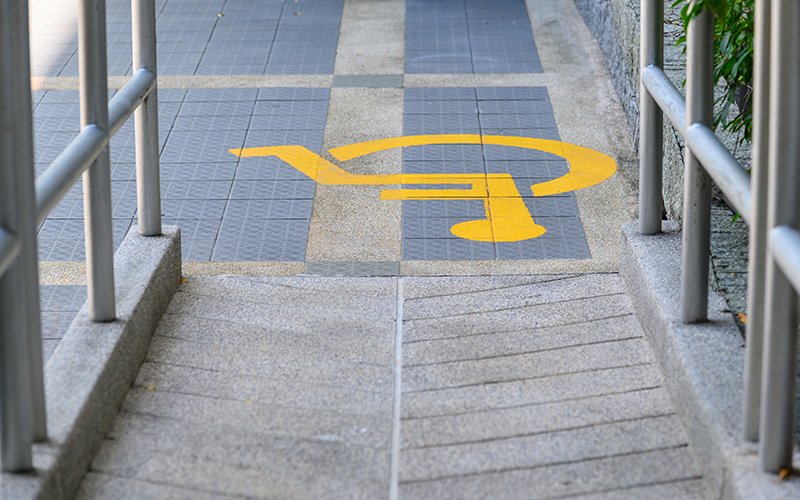Universities aim to cater to all with their wide range of programmes, flexible study options, and state-of-the-art facilities, but do they truly cater to 'all'?
{{ vm.tagsGroup }}
18 May 2023
4 Min Read
Ishaanaah Ravi (Alumna Writer), Nellie Chan (Editor)
Universities aim to cater to all with their wide range of programmes, flexible study options, and state-of-the-art facilities, but do they truly cater to 'all'?
As students, many of us may value universities for their beautiful campuses or reputable rankings, but for some of our friends, they require more than just aesthetics or status. Special needs students are those of us with disabilities, including learning disabilities; they often face challenges that may not be immediately noticeable to others. Therefore, there is a need to create an inclusive learning environment to ensure all students have equal opportunities to learn and, later, to succeed.
The two topmost factors in creating an inclusive learning environment are accessibility and safety. Sure, there are lifts fitted for accessibility and security officers stationed for safety in most (if not all) campuses — but let's be honest, are they enough?
No, they're not! An estimated 93 to 150 million children and youth with disabilities worldwide still experience barriers to learning due to the lack of inclusive learning environments. Thus, campuses must offer features, such as wheelchair ramps, clear signage, emergency call boxes, and more, on their grounds to help break down these barriers.
Gallaudet University, a private university for the deaf and hard of hearing in Washington, D.C., is a prime example of designing for accessibility. Its campus is built with wide open spaces and corridors that aid visual communication, a core component of deaf culture.
Universal Design for Learning (UDL) is a framework to improve and optimise teaching and learning for all students. Its goal is to create flexible learning environments and spaces that can accommodate their diverse needs, interests, and abilities. And to achieve that goal, the support of technology — the third factor — is a plus!
Assistive technology can be beneficial for special needs students. It equips them with tools designed to help them function, communicate, and learn better; they range from low-tech devices like a pencil grip or large print books to high-tech devices like smartpens or speech-generating devices. Brown University in Providence, Rhode Island supplies such tools for its students with learning disabilities: attention deficit hyperactivity disorder (ADHD), dyslexia, and dysgraphia, among others. The tools include Kurzweil 3000, a text-to-speech software that assists students with reading difficulties, and Dragon NaturallySpeaking (or Dragon), a speech recognition software that allows students with writing difficulties to transcribe speech to text.
Sensory design — the fourth and final factor — which comprises visual and non-visual elements such as colours, materials, and lighting, can enhance the learning experience for special needs students by creating a more immersive and engaging environment. It can help students better process and retain information and make connections between different concepts.
According to research, directly or indirectly incorporating elements of nature into the built environment (i.e., biophilic design) decreases stress, blood pressure, and heart rates but increases productivity, creativity, and well-being. Therefore, natural colours, natural lighting, and areas for outdoor learning are recommended. Views of greenery can also help to reduce ocular fatigue!
Youth Vision’s Community Sensory Garden, funded by the University of Edinburgh in Scotland, is designed around the sensory needs of its vulnerable and neurodiverse students; it's a safe space for those experiencing sensory overload to break away!
Now if you're wondering how Taylor's University Lakeside Campus supports students with special needs — wonder no more! I've got you covered. Here are the several measures we've taken to ensure inclusivity on our campus!
First, our campus employs a barrier-free design, with wheelchair-accessible lifts and ramps, accessible parking spaces and restrooms, and wide and well-lit pathways. Mobility-impaired students can access buildings, facilities, and other areas of our campus safely and independently. Second, our Centre for Counselling Services (CCS) offers a range of provisions and support to students with special needs, such as academic, exam, and facility accommodations, which they determine and implement via the Student with Special Needs Access Plan. Students with disabilities are, therefore, given equal access and opportunities to learning as their abled peers. Third, our campus also adopts a biophilic design, sitting on 27 acres of tropical greenery and surrounding a revived 5.5-acre man-made lake — students can stimulate their senses here with the sound of lapping water or quacking ducks!
In conclusion, creating an inclusive and supportive learning environment is key to unlocking equitable education for special needs students. By factoring in accessibility and safety, technology, and sensory and space in their architecture and design, universities (and other educational institutions) can cater to the educational and individualised needs of all students, ensuring that they have the resources and support they need to succeed. So, let’s design for diversity and embrace and empower every student to reach their full potential!
Ishaanaah Ravi is a Bachelor of Education (Honours) alumna who enjoys reading and creative writing in her free time. She also finds fulfillment in conducting volunteer work, believing that life is not just about what we receive, but also about what we give.


